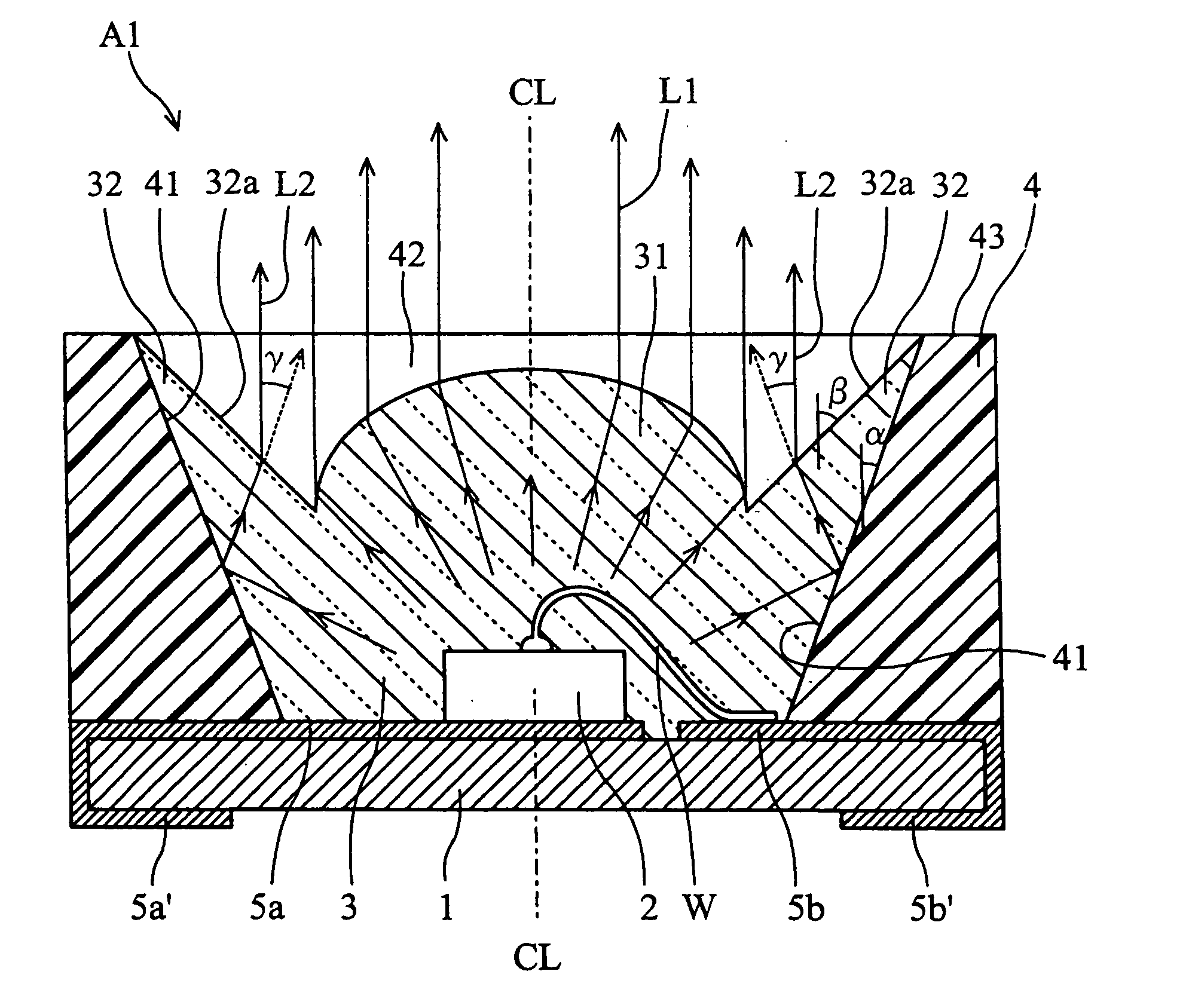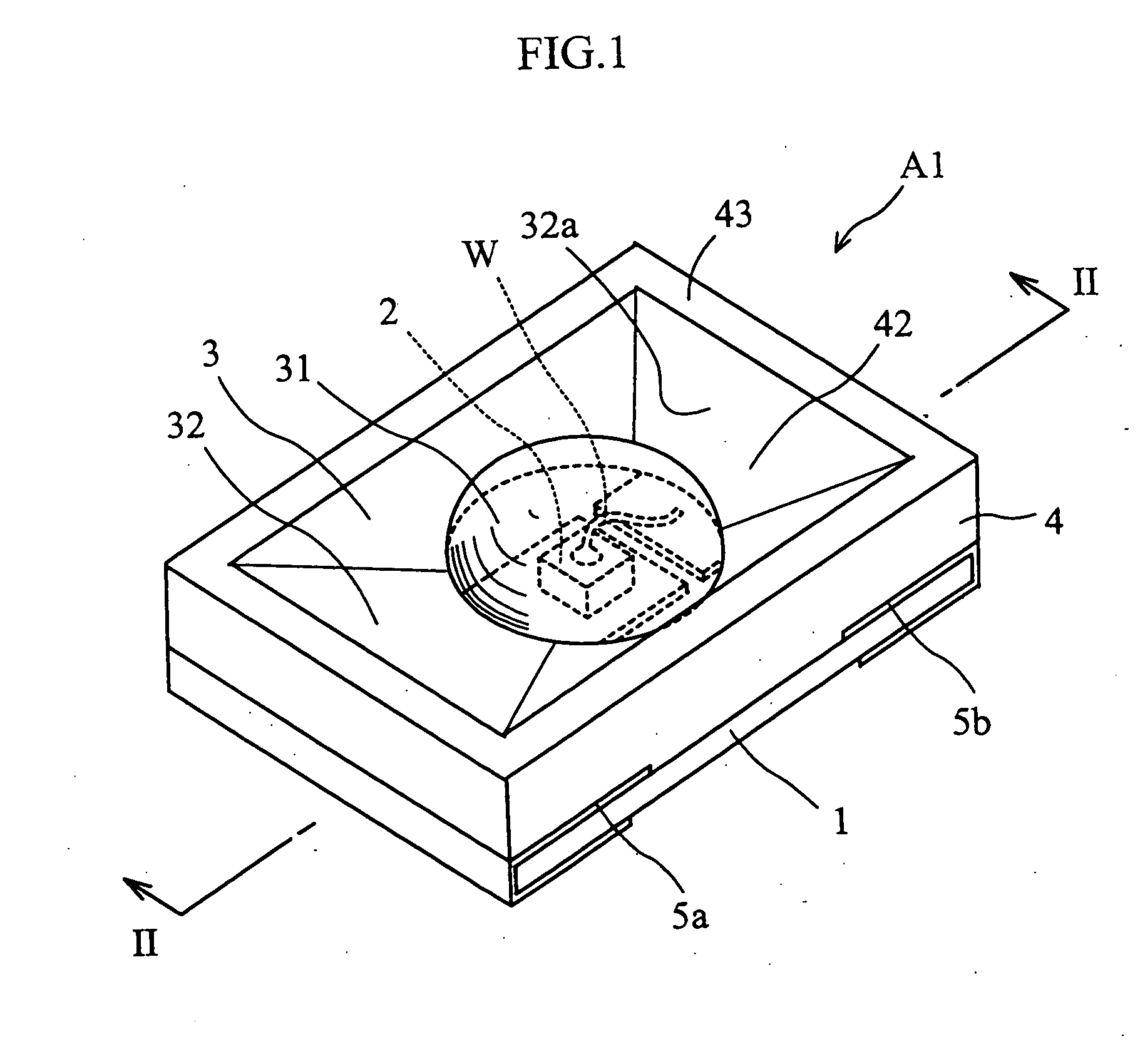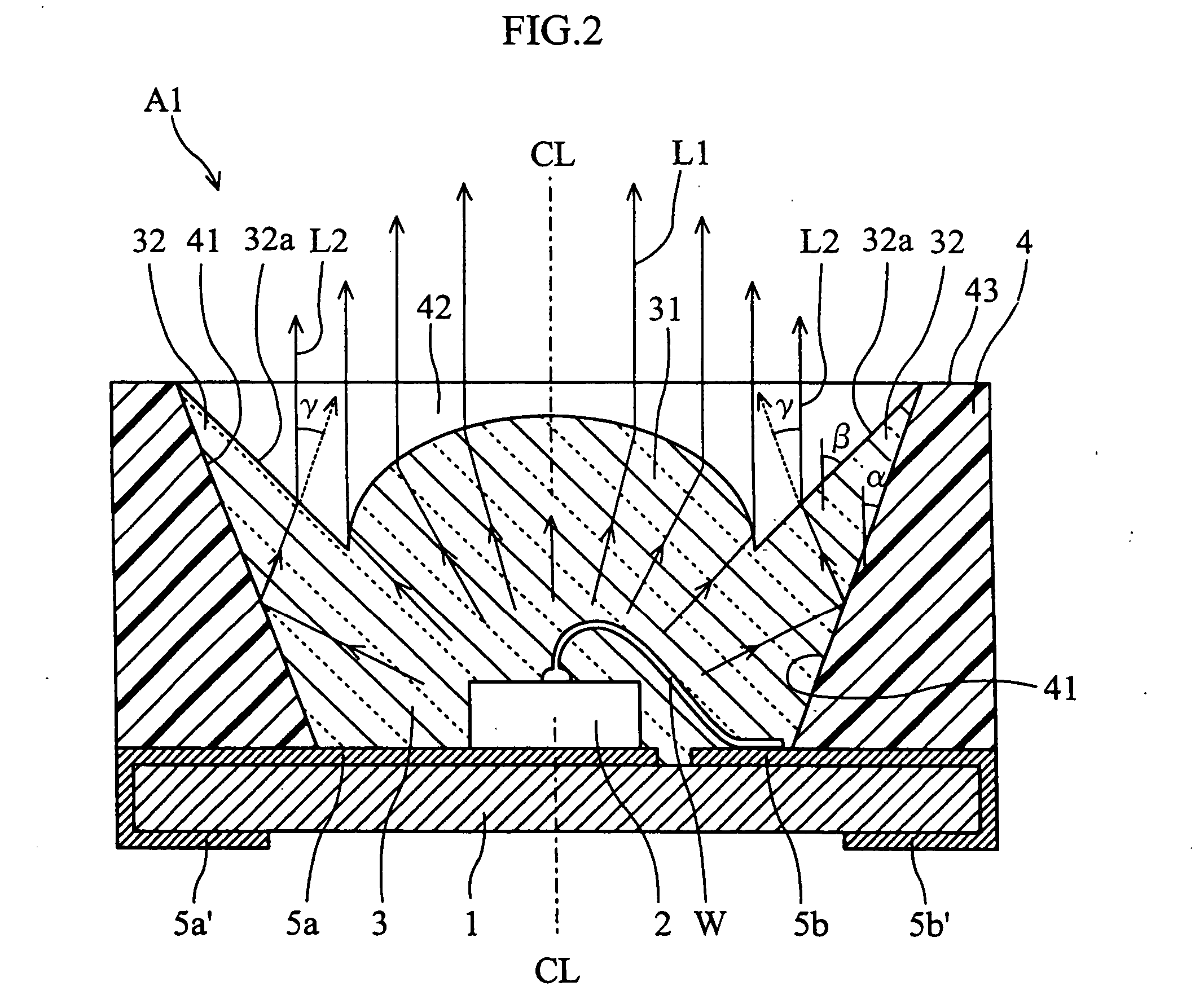Optical semiconductor unit
- Summary
- Abstract
- Description
- Claims
- Application Information
AI Technical Summary
Benefits of technology
Problems solved by technology
Method used
Image
Examples
first embodiment
[0027]FIGS. 1 and 2 show an optical semiconductor device according to the present invention. The illustrated optical semiconductor device A1 includes a rectangular insulating substrate 1, an LED chip 2, a light permeable member 3 and a reflector 4.
[0028] The substrate 1 is made of a glass-fiber-reinforced epoxy resin, for example. The LED chip 2, the light permeable member 3 and the reflector 4 are mounted on the upper surface of the substrate 1. The LED chip 2 has an upper surface and a lower surface respectively formed with electrodes. The LED chip 2 is bonded to a first conductor portion 5a provided on the substrate 1. By this bonding, the electrode on the lower surface of the chip 2 is electrically connected to the first conductor portion 5a. The electrode on the upper surface of the chip 2 is electrically connected, via a wire W, to a second conductor portion 5b provided on the substrate 1. The first and the second conductor portions 5a, 5b extend from the upper surface up to t...
second embodiment
[0040]FIG. 4 shows the basic structure of an optical semiconductor device A2 according to the present invention. In the optical semiconductor device A2, the extension 32 of the light permeable member 3 has a front end surface (upper surface) 32b which is flush with the upper surface 43 of the reflector 4. The inclination angle β of the light emitting surface 32a of the extension 32 is equal (or generally equal) to the inclination angle α of the reflecting surface 41. Therefore, the light emitting surface 32a is parallel to the reflecting surface 41. With such a structure again, the light reflected by the reflecting surface 41 can be emitted to the outside while undergoing refraction at the light emitting surface 32a. While the light traveling generally vertically from the downside can pass through the front end surface 32b to the upside, the light impinging on the front end surface at an incidence angle which is larger than a predetermined total reflection critical angle is totally ...
third embodiment
[0042]FIG. 5 shows an optical semiconductor device A3 according to the present invention. In the optical semiconductor device A3, the light emitting surface 32a of the extension 32 is convexly curved. With the curved light emitting surface 32a, the proportion of light traveling from the reflecting surface 41 and totally reflected by the light emitting surface 32a can be made smaller than when the light emitting surface is flat. Thus, the amount of light emitted through the light emitting surface 32a can be increased.
PUM
 Login to View More
Login to View More Abstract
Description
Claims
Application Information
 Login to View More
Login to View More - R&D
- Intellectual Property
- Life Sciences
- Materials
- Tech Scout
- Unparalleled Data Quality
- Higher Quality Content
- 60% Fewer Hallucinations
Browse by: Latest US Patents, China's latest patents, Technical Efficacy Thesaurus, Application Domain, Technology Topic, Popular Technical Reports.
© 2025 PatSnap. All rights reserved.Legal|Privacy policy|Modern Slavery Act Transparency Statement|Sitemap|About US| Contact US: help@patsnap.com



